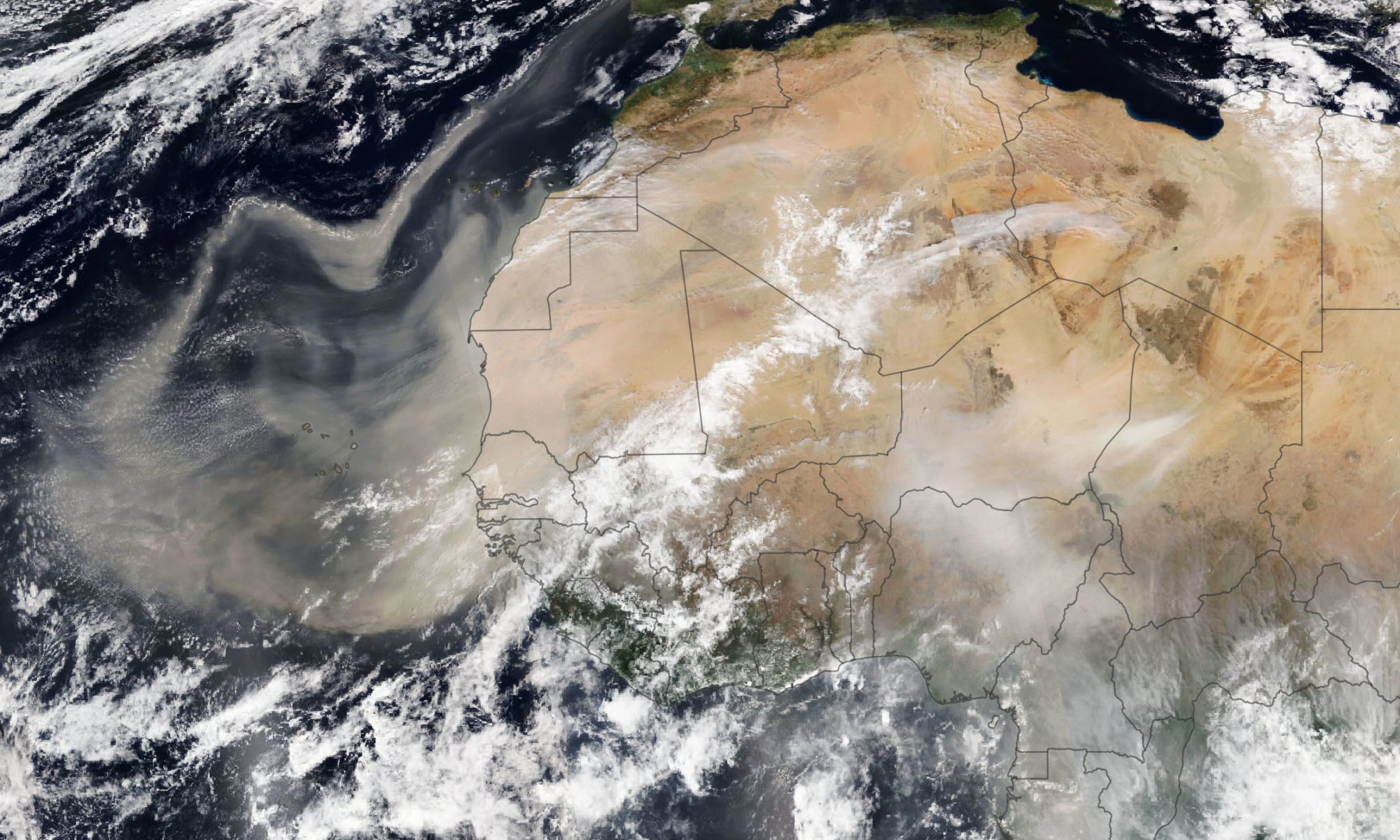Paper – Influence of Saharan Dust on the Large‐Scale Meteorological Environment for Development of Tropical Cyclone Over North Atlantic Ocean Basin
Authors – Yue Sun and Chuanfeng Zhao
Several times a year, strong gusts blow dust from the Sahara Desert westwards over the Atlantic Ocean. When the plume reaches the Caribbean, many residents experience respiratory irritation and allergic reactions to the dust. On particularly bad days, those with sensitivities to or certain pre-existing conditions are urged to stay indoors. The haze reduces visibility and casts a dull filter over the landscape.
There are several effects of Saharan dust on the climate and environment, but a more immediate product of the plumes is their effect on hurricane activity. Many researchers have investigated whether tropical cyclones are suppressed by the dust, but the large-scale link between dust storms and individual elements of hurricane formation has been difficult to demonstrate. Now, a 2020 paper by researchers at the Beijing Normal University in China has explored the influence of Saharan dust on the main factors of hurricane formation. They considered how observations of weather variables like humidity levels, changes in wind speed and direction and ocean temperatures were affected by dust plumes from June to September of 2000 to 2018. The study area included most of West Africa, the Atlantic Ocean, the Caribbean and the Gulf of Mexico (0°W to 80°W and 0°N to 40°N).

The researchers used observations of dust quantities at different levels of the atmosphere and statistical analysis to review the link between dust levels, each weather variable, and the development of tropical systems. They found that, though the air is warmer at the layer where the dust travels, the sea surface temperatures are much lower during and after dust events. Humidity also decreases at lower levels of the atmosphere (but increases at mid-levels) due to the effects of the dust. On the continent, dust also raises surface temperatures. The difference between the warmer land and cooler seas increases wind shear, which in turn suppresses storm systems.
Researchers concluded that there is a statistically significant link between Saharan dust and the meteorological factors that result in hurricanes. Tropical cyclones are less likely when dust is active in the Atlantic since they thrive in high humidity and warmth, both of which are stifled by large dust plumes.
The authors’ work fits with previous simulations that modeled potential interactions of the dust layer with tropical cyclones, as well as documented trends in hurricane timing and dust activity. While the authors did not explore other factors, additional research could show the effects of ocean currents and other meteorological variables on these findings, adding valuable information to our understanding of why hurricanes form. One such research direction might explore the major influence of El Niño and La Niña years on storm formation. The authors did not discuss the effect of dust on storms that have already formed, but in 2001, National Oceanic and Atmospheric Administration satellites observed the Saharan dust preventing Erin, the 6th tropical depression of the season, from strengthening4. Once free of the dust, Erin became the first hurricane of that year.
In addition to helping keep hurricanes away, Saharan dust plumes are also important for their role in ecosystems on land and in the ocean. As the plume drifts, dust settles into the ocean, adding millions of tonnes of nutrients to the marine environment. This supports the growth of tiny plant-like organisms called phytoplankton that absorb carbon dioxide from the air and water and produce oxygen. Phytoplankton are crucial to marine ecosystems and lock away carbon from the atmosphere when they die and settle to the ocean floor. The nutrients in the dust also encourage the growth of plants on land. This is great for the forests in the Caribbean and parts of South America in the path of the dust.
Despite the sinus issues and darkened skies, the dust has several long- and short-term benefits. So, the next time the forecast shows plumes of dust moving across the Atlantic, remember that it’s not all bad news.
Do Hurricanes Choke on Dust? by Davitia James is licensed under a Creative Commons Attribution-ShareAlike 4.0 International License.

